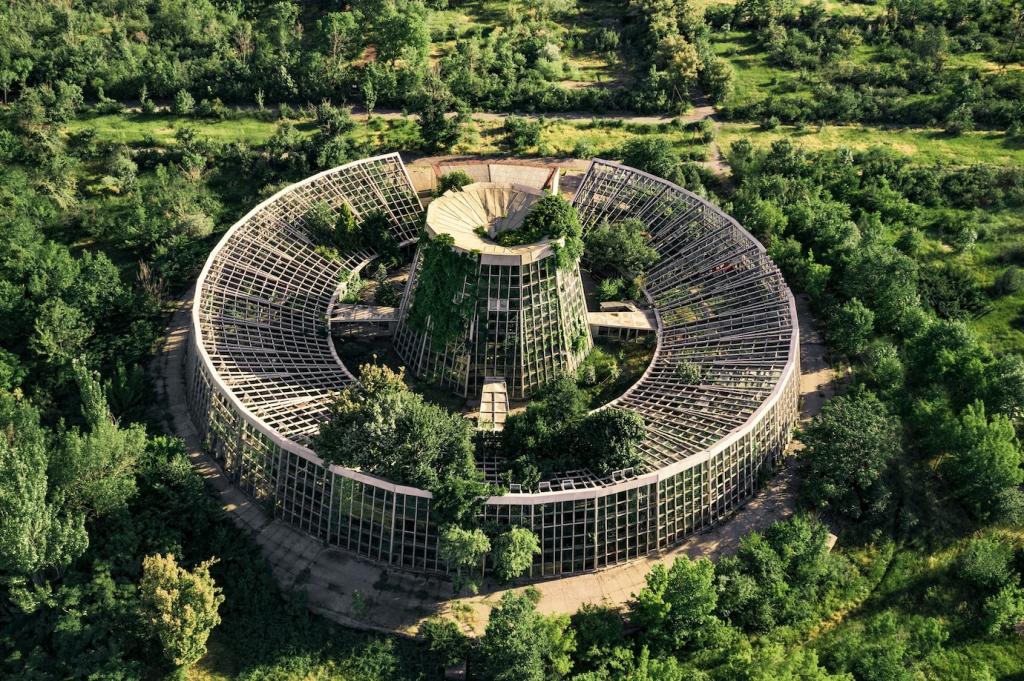Future-Forward Ideas in Sustainable Urban Planning
Future-forward urban planning seeks innovative ways to address rapid urbanization while maintaining environmental integrity and enhancing livability. These ideas focus on integrating cutting-edge technologies, reimagining public spaces, fostering community engagement, and future-proofing cities to withstand evolving challenges. Sustainable urban planning not only minimizes the ecological footprint of city growth but also creates resilient and inclusive societies. This page delves into the latest strategies and visions shaping the cities of tomorrow, exploring how multidisciplinary approaches can redefine how we live, move, and interact within urban spaces.

Intelligent Transportation Networks
Intelligent transportation networks employ sensors, artificial intelligence, and digital platforms to streamline traffic flow, enhance public transit, and promote alternative mobility options. By analyzing real-time data on congestion, travel demand, and emissions, these networks facilitate dynamic route planning for both private and public fleets. The integration of electric and autonomous vehicles further contributes to reducing pollution and improving urban accessibility. These advancements ensure mobility that is not only efficient but also environmentally responsible, contributing to the sustainability goals of modern cities.
Automated Energy Management Systems
Automated energy management systems use IoT devices and smart grids to monitor, predict, and adjust energy usage in real-time across neighborhoods and entire cities. By dynamically shifting loads based on consumption patterns and renewable energy generation, such systems drastically lower greenhouse gas emissions and operational costs. They enable rapid identification of inefficiencies or malfunctions, ensuring resources are deployed only when needed. These systems thus constitute the backbone of low-carbon cities where every watt is accounted for and optimized to support sustainable development goals.
Responsive Utility Networks
Responsive utility networks utilize predictive analytics to coordinate the delivery of water, waste, and power. They can detect leaks, forecast usage surges, and dynamically allocate resources, minimizing waste and environmental impact. Such networks empower city officials and residents alike with actionable insights, encouraging conservation and proactive maintenance. The result is a more resilient urban infrastructure system that adapts to changing needs, safeguards resources, and supports healthy communities in line with modern urban planning visions.
Urban Forests and Vertical Gardens
Urban forests and vertical gardens reintroduce nature into dense cityscapes, improving air quality, regulating temperatures, and providing habitats for local wildlife. By covering buildings with vegetation and developing mini-forests in underutilized areas, cities not only beautify their neighborhoods but also create microclimates that combat heat island effects. These spaces offer opportunities for urban agriculture, environmental education, and recreational activities, making city life healthier and more enjoyable while supporting a balanced urban ecosystem.
Accessible Community Parks
Accessible community parks are purposefully designed to cater to people of all ages, physical abilities, and backgrounds. Features such as barrier-free paths, sensory gardens, and inclusive playgrounds ensure equitable access for everyone. These parks serve as vital hubs for social interaction, exercise, and cultural events, helping bridge gaps between neighborhoods and promote cohesion. Incorporating community feedback into park designs drives a sense of ownership while guaranteeing the evolving needs of residents are met, exemplifying people-centric urban planning.
Climate-Resilient Waterfronts
Climate-resilient waterfronts reimagine traditional riverbanks, lakesides, and coastlines to resist flooding, erosion, and extreme weather driven by climate change. By integrating green infrastructure such as wetlands, floodplains, and native plantings, these spaces absorb excess water and buffer urban areas from natural disasters. At the same time, they create attractive recreational corridors that connect city dwellers with nature. Harnessing innovative design and engineering, climate-resilient waterfronts harmonize ecological protection with urban vibrancy, ensuring long-term sustainability and safety.
Previous slide
Next slide
Community Engagement and Co-Creation
Participatory Urban Design Platforms
Participatory urban design platforms leverage digital and physical forums where citizens can contribute ideas, evaluate proposals, and co-create solutions in real time. These platforms democratize planning by allowing broader, more diverse input, ultimately leading to outcomes that resonate more deeply with communities. Integrating citizen feedback into decision-making processes increases transparency, mitigates conflict, and produces more relevant, sustainable urban environments. This collaborative approach builds a sense of collective responsibility for the city’s future.
Neighborhood Innovation Hubs
Neighborhood innovation hubs serve as incubators for grassroots solutions addressing local challenges, from energy use to social services. These spaces facilitate experimentation, workshops, and pilot projects where residents, planners, and businesses collaborate on urban issues. By empowering local actors with tools, funding, and knowledge, innovation hubs stimulate creativity and adaptive thinking. Their flexible nature allows cities to test and scale successful initiatives, ensuring that urban development remains attuned to shifting community priorities and technological opportunities.
Collaborative Policy-Making Initiatives
Collaborative policy-making initiatives bring together stakeholders from different backgrounds—residents, businesses, non-profits, and government agencies—to jointly shape regulations and development plans. Such processes ensure that policies reflect the diverse needs and expertise found across a city’s population. Inclusive dialogue can surface unique solutions and address potential conflicts proactively, creating resilient policies that engender widespread buy-in. By institutionalizing collaboration, cities can more rapidly and equitably adapt to changing social, economic, and environmental landscapes.
